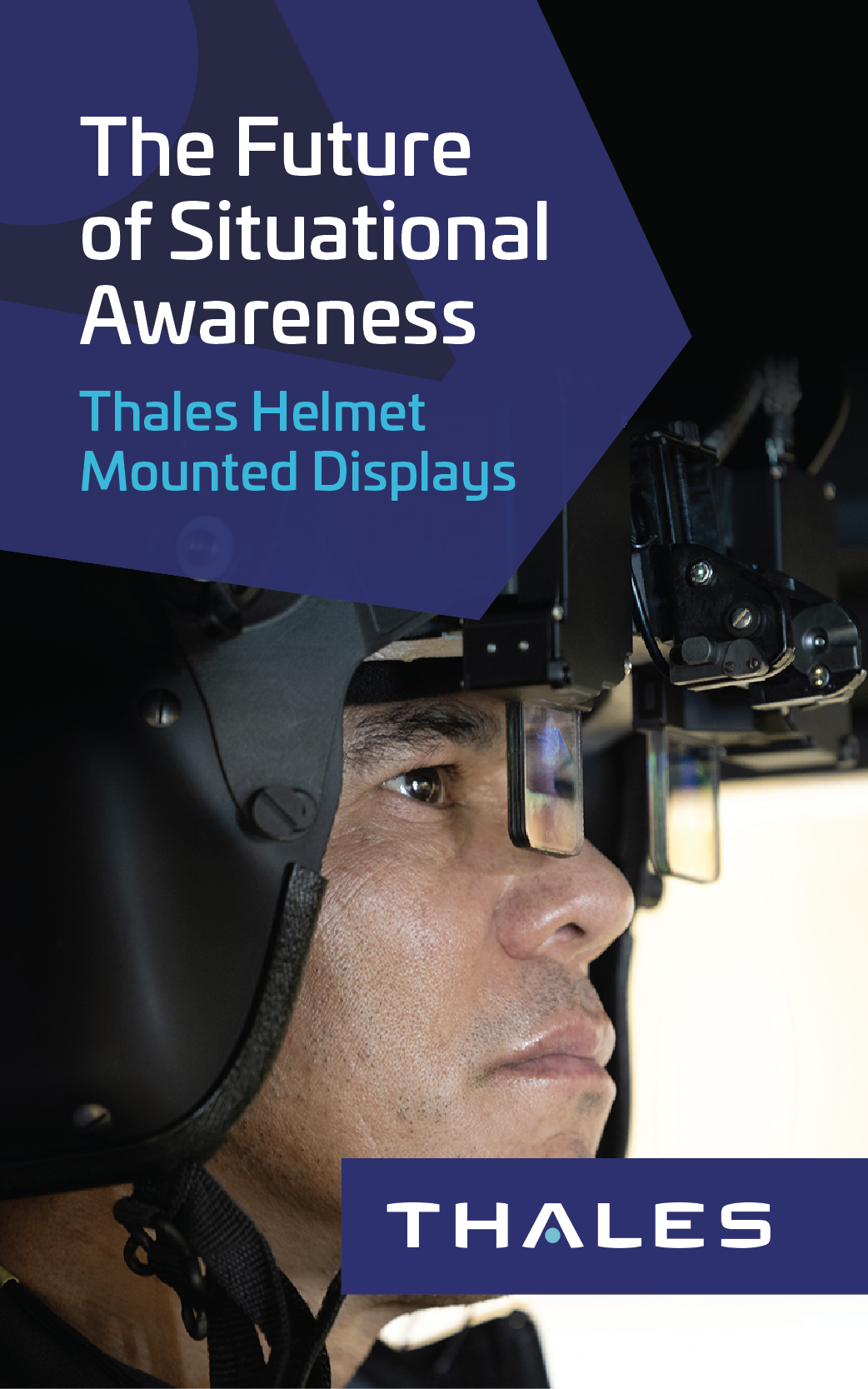
From the Field / By By Dr. William D. Lewis and Mr. Carvil E.T. Chalk: Future Vertical Lift is a necessary evolution for Army aviation to dominate peer and near-peer adversaries. While efforts to support FVL have been underway as part of Army aviation science and technology (S&T) activities within the Research, Development and Engineering Command (RDECOM) Aviation & Missile Center for a number of years, we are adapting to meet the burgeoning demands of the future fight. The Aviation Development Directorate (ADD) is organized by focus areas to direct our portfolio investments in autonomous and unmanned systems, basic research and aeromechanics, mission systems, platforms, power systems, and vehicle management & control and rotors. Executing efforts across these foundational technical domains for vertical lift systems remains a robust construct to enhance lethality and survivability of aviation assets in support of the ground force.

The ADD Degraded Visual Environment-Mitigation program is on track to deliver technologies that will enable aviation operations across a range of environmental conditions, as demonstrated during this preliminary system flight test in whiteout conditions. / U.S. ARMY AMRDEC COURTESY PHOTO

Successful S&T Efforts
Two near-term examples of successful S&T are found in the approaching culmination of our Joint Multi-role Technology Demonstrator program for air vehicles and mission systems architecture and our Degraded Visual Environment-Mitigation program. Although begun prior to the recent elevation of FVL into the top six modernization priorities, the timing of these efforts makes the Army well-postured to utilize these technologies in FVL systems. The knowledge gained and the technology demonstrated in each of these programs will help make revolutionary gains in speed, range, and all-environment performance to bring offensive and defensive overmatch. However, these solutions alone will not meet the demands the Army faces to win in a complex world through multi-domain operations.
While S&T efforts have historically been aligned to our current fleet, we are now reorienting to the lines of effort (LOEs) established by the FVL CFT, which comprise the Future Attack-Reconnaissance Aircraft, the Future Long-Range Assault Aircraft, an Advanced Unmanned Aircraft System, and a modular systems approach. These LOEs are further enhanced by cross-platform capability developments in survivability, lethality, and autonomy. As we consider the direction of these LOEs, and the challenges brought by our adversaries, we must assess this new battlespace and the capabilities needed to succeed.
Systems Integration
Thus, our S&T efforts now turn to the integration of complex systems onboard FVL aircraft and between them. ADD envisions coordinated air-ground operations to an extent never before considered. Teams of manned, optionally-manned, and unmanned expeditionary air vehicles will conduct autonomous and semi-autonomous operations to penetrate enemy air defenses, locate and defeat high-value targets through coordinated long-range precision fires or stand-off attack, and execute localized electronic warfare to create and exploit windows of air superiority deep in enemy territory. When confronted by integrated air defense systems, these aviation teams will maneuver as a morphing body to provide cooperative decoy and active countermeasures for defense and then use autonomous behaviors to successfully maneuver against, engage, and defeat those threats. If individual air vehicle team members are rendered ineffective, the team will autonomously reconfigure to maintain integrity and continue the mission.
In this future construct, at the individual air vehicle systems level, each platform is built upon a digital backbone that affords a cyberphysical interface that enables fleet-wide updates to meet emerging changes in the threat. This digital backbone will use a common open systems architecture onto which various mission systems can be integrated rapidly to enhance, replace, or add needed capability with reduced fielding timelines and with greater configuration management across this diverse fleet. The platforms themselves are designed with embedded vulnerability enhancements, improved survivability, and low-workload human-systems interfaces. And, autonomous functions are employed for routine operations and to enhance responses to off-nominal conditions by the crew.
Investment Strategy
To meet the FVL CFT LOE priorities in such a demanding combat environment, we have identified nine major thrusts to guide us in shaping the strategy of our S&T investments.
- Provide air vehicles and air vehicle technologies that enable the battlefield persistence (endurance, lethality, and survivability) and rapid response (speed and availability) required by emerging concepts of operation and employment.
- Implement open systems architectures that serve as a testbed for new methods of rapid cyberphysical (hardware, software, mechanical, and electrical) system integration and airworthiness certification, including reliance on validated simulation methods for substantiation.
- Develop air-launched effects that comprise a family of air vehicles sized to conduct mission sets using modular payloads in semi- and fully-autonomous modes at ranges and durations complementary to manned or unmanned FVL systems.
- Demonstrate autonomy and cooperative teaming using autonomous decision-making capabilities and algorithms that enable heterogeneous formations of air vehicles to conduct complex missions in denied-link environments.
- Shape the human-system interfaces that will enable crewmembers to function as mission commanders from a battle station with reduced cognitive demands. They will be equipped to orchestrate operations of heterogeneous formations of manned and unmanned air vehicles at a faster speed of battle to ensure dominance inside the enemy’s observe – orient – decide – act (OODA) loop.
- Explore novel power generation, storage, and distribution technologies (e.g., multi-fuel capable engines, hybrid electric and solar power) that support efficient and durable operations from hover to high-speed flight and enable utilization of new high-energy weapon systems.
- Dominate complex environments through navigation and airspace management across teams of systems operating in natural clutter and high-density airspace at low altitudes from hover to high-speed flight across environments that degrade current operations (visual, infrared, radio frequency, and network).
- Reduce fielding timelines and lower technical risks by broadening investigations to isolate high-impact technologies for exploitation in acquisition strategies that target successful entrance into programs of record post milestone B through collaborative engagement with acquisition personnel and novel contracting approaches that afford continuity of effort.
- Enhance in-house capabilities: sculpt the government workforce to respond with adaptability and agility while retaining core competencies through carefully crafted research and development efforts that are tailored to investigate areas of peculiar government interest not readily explored by commercial interests or for which the government must retain independent expertise.
Our aim is to support Army Soldiers wherever and whenever they are called upon to meet the enemy in combat and win. We look forward to working with all of you in achieving this goal.
“Army Strong!”
Dr. William D. Lewis is the director and Mr. Carvil E.T. Chalk the acting chief engineer for the Aviation Development Directorate of the Aviation and Missile Research, Development, and Engineering Center located at Redstone Arsenal, AL.
























